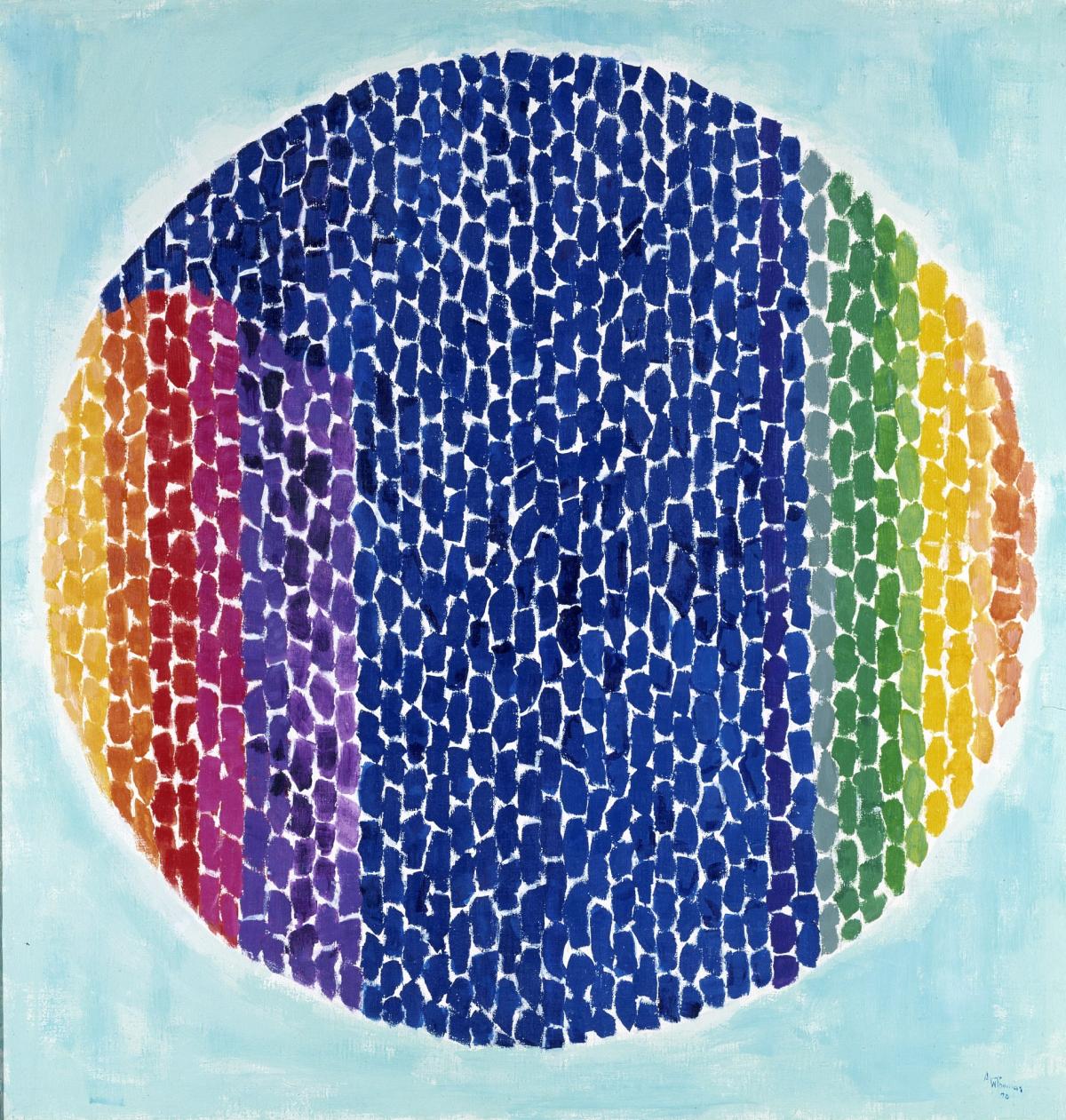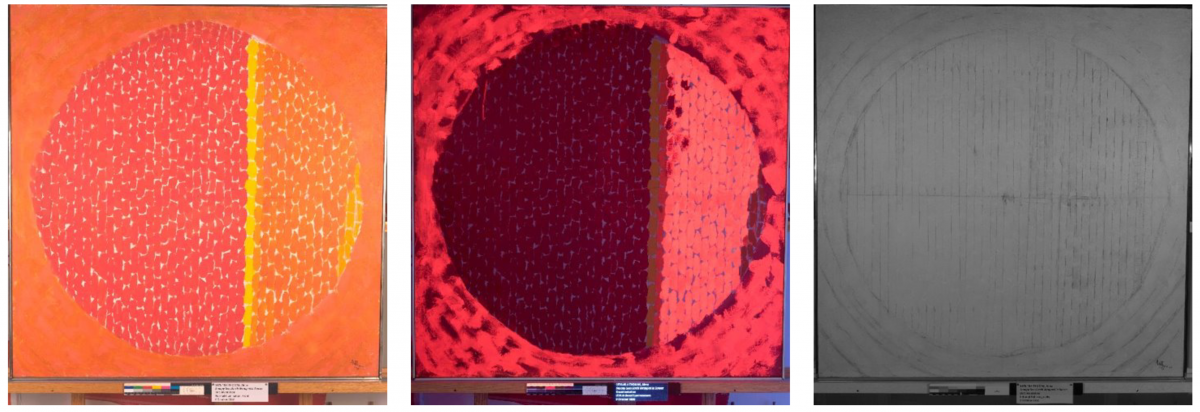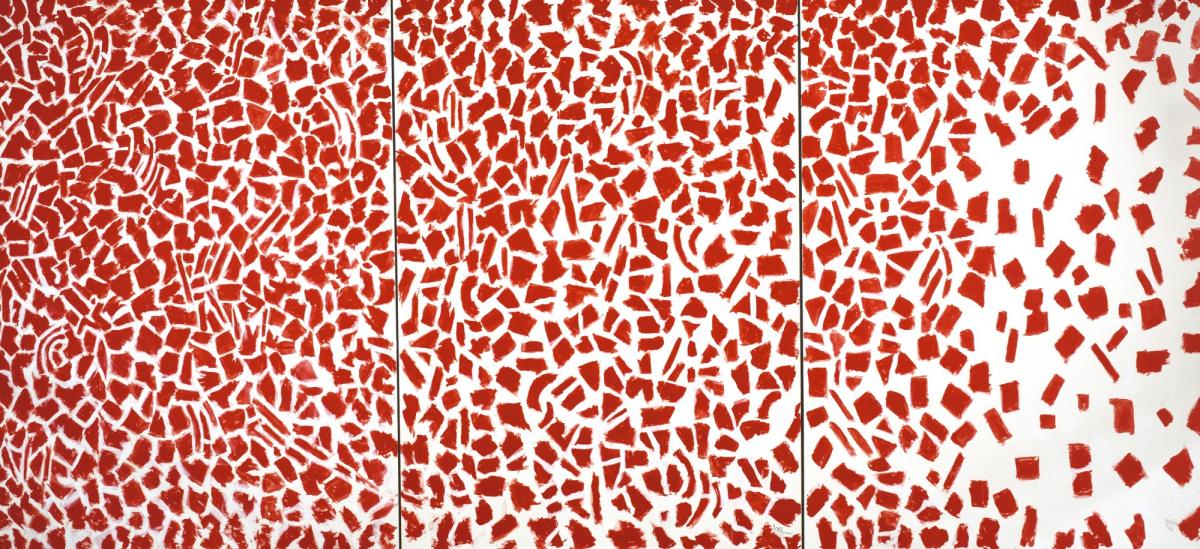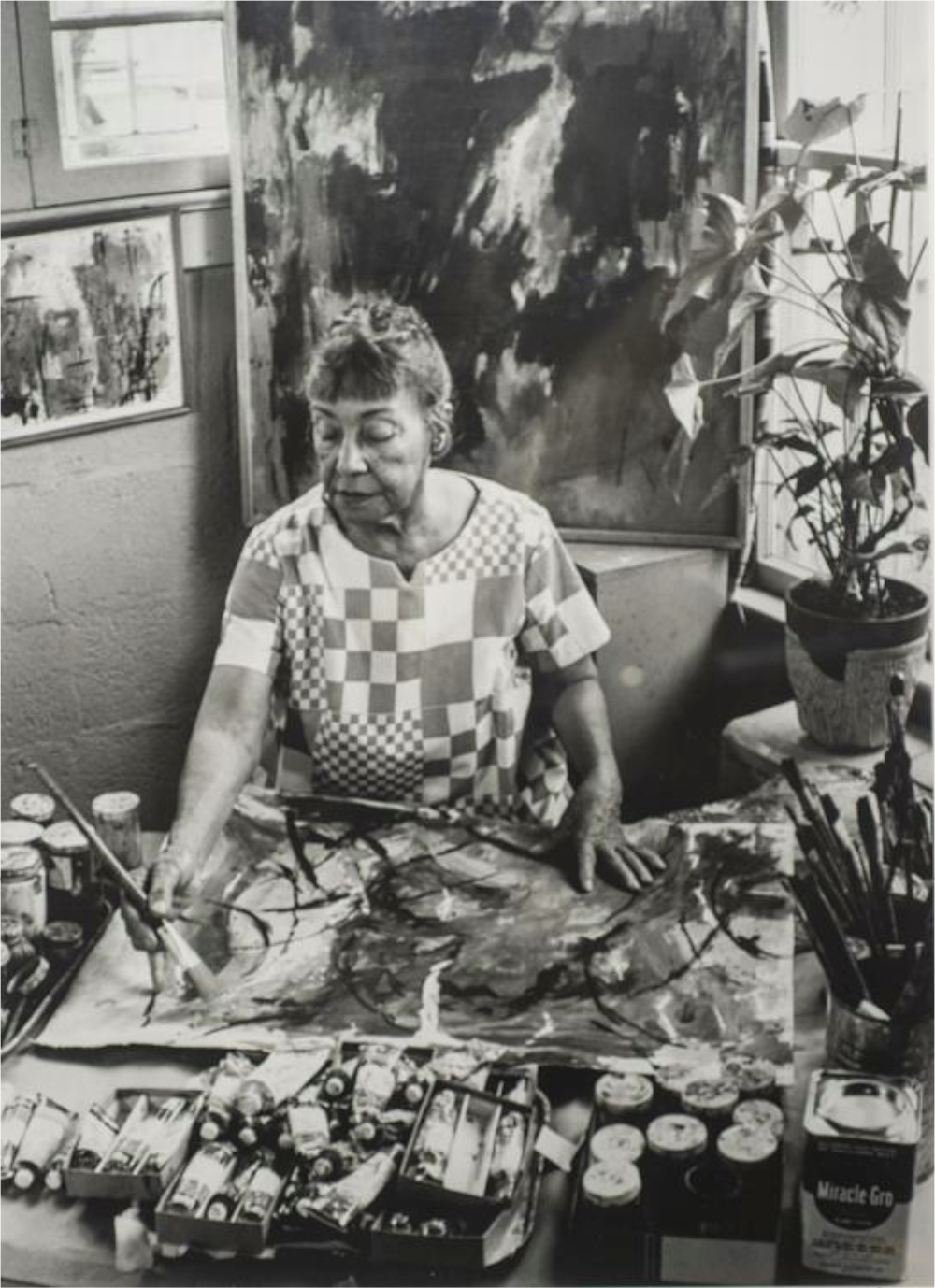Sydney Nikolaus, project conservator, joined SAAM’s Head of Conservation Amber Kerr and Conservator Gwen Manthey to research the working methods and painting materials of the Washington Color Field artist Alma Thomas in preparation for the new traveling exhibition Alma W. Thomas: Everything is Beautiful. This is the first time this type of in-depth analysis of the artist’s methods and materials has been undertaken.
In the fall of 2019, I embarked on an exciting new project working with conservators in SAAM’s Lunder Conservation Center. We examined nearly 40 works by Alma Thomas, from the museum’s collection and other local museums, to understand how Thomas achieved her visual effects and adapted her practice of large-scale painting due to arthritis and other physical limitations. The abstract, expressionist works of bold color Thomas is known for were painted in the last decades of her life, after she retired from a nearly 40-year career as a teacher. Her signature style features rows or circles of geometric brushstrokes. Using nondestructive methods of analysis like multispectral imaging and infrared reflectography, we uncovered new findings that expand our knowledge of Thomas’s practice.
One of the primary properties of Thomas’s work is her use of pure color to achieve vibrant compositions. Her shift from oil to acrylic emulsion in the 1960s allowed for the vivid hue to pop against the white ground of the canvas, and Thomas layered colors to increase their presence within the composition. In Snoopy—Early Sun Display on Earth (1970), we successfully identified the presence of two reds layered to complete the left portion of the painting. First identified when they fluoresced differently under ultraviolet light, we used a technique known as X-ray fluorescence (XRF) spectrometry to identify the pigments Thomas used. XRF is an elemental analysis technique with broad application in science as it doesn't require any sampling in order to identify materials. The XRF analysis for this painting identified the presence of both cadmium and chromium, indicating a darker, cadmium red layered on top of a lighter, chrome-based coral red. Such findings reinforce Thomas’s intimate knowledge of color theory that she applied to her practice and help us understand how she achieved such vibrancy in her works.
Examination of Thomas’s paintings and a review of archival material also reveals the careful planning the artist used to compose her paintings. We found that Thomas used complex underdrawings in pencil—some visible to the eye and others only available with infrared reflectography—to plan the layout of her signature dashes. She used vertical lines and rulers to mark the rows and columns for each color and mapped and annotated color placement within the composition. She also used preparatory sketches and studies, which were found in her archives at the Smithsonian’s Archives of American Art.
As she aged, Thomas modified her painting technique to adapt to the physical changes in her body. Red Azaleas Sing and Dance Rock and Roll Music (1976) shows the variety of shapes that replaced her signature columns of dashes of just a few years earlier. Unable to move as easily and prepare the canvas following health issues in 1974, Thomas’s series evolved to a free interplay of shapes and forms like wedges and curves. Without the strict rows and columns to define the composition, the 13-foot-wide tryptic shows the same vitality imbued into her earlier works but with a new rhythm and dynamism that denies her advanced age.
SAAM conservation and curatorial staff wrote a chapter noting the findings of this project for the catalogue that accompanies the exhibition Alma W. Thomas: Everything is Beautiful organized by the Columbus Museum and the Chrysler Museum of Art . In 2023, SAAM will present Composing Color: Paintings by Alma Thomas that will include aspects of this research as well. Moving forward, SAAM’s research into the work of Alma Thomas will help curators better understand the artist and her process, and conservators will have the tools to ensure the longevity of Thomas’s body of work.
Alma W. Thomas: Everything Is Beautiful opens July 9, 2021 at the Chrysler Museum of Art in Norfolk, Virginia. Composing Color: Paintings by Alma Thomas will be on view at SAAM in 2023.

























